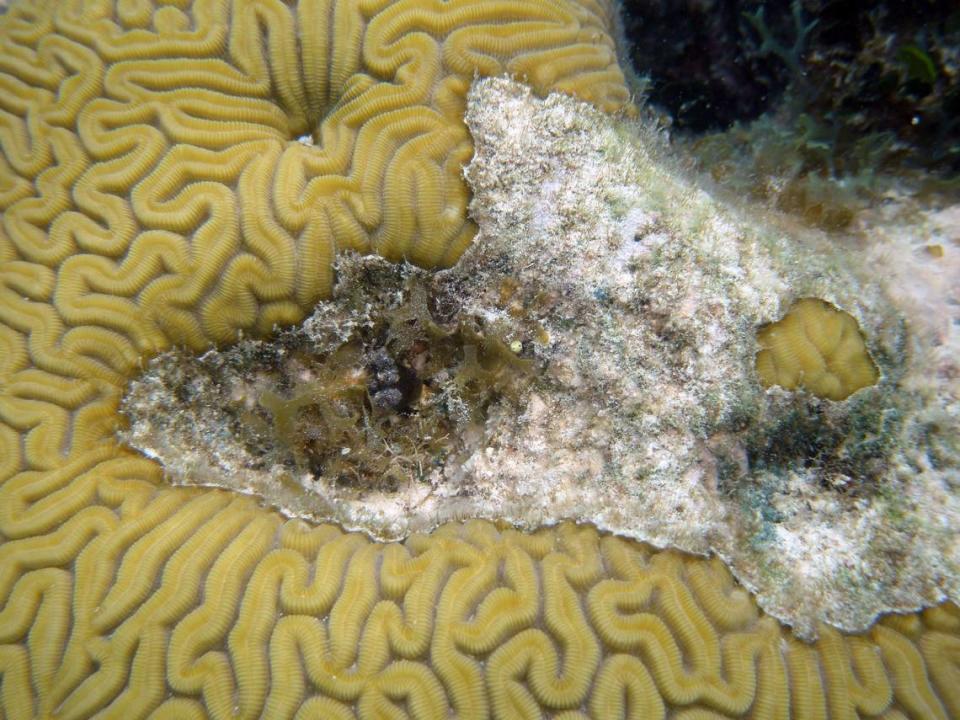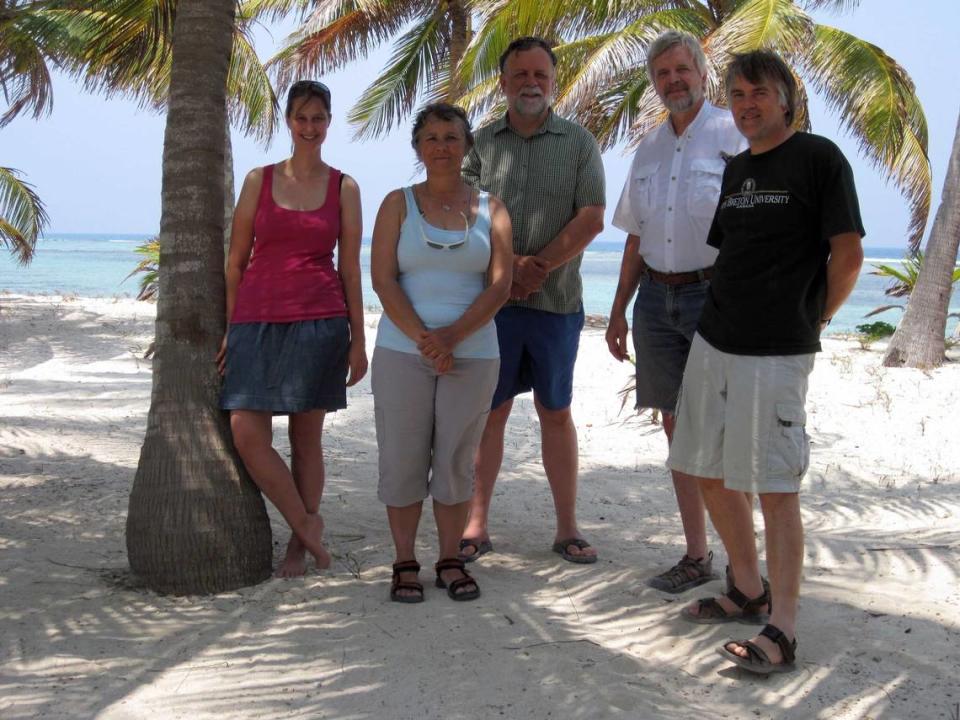A mucus-spewing Florida creature now has ties to singer Jimmy Buffett’s greatest hit
- Oops!Something went wrong.Please try again later.
Jimmy Buffett’s name is already on restaurants, hotels and, of course, music.
There’s now a campaign to name the Key West airport and a stretch of state Road A1A after the singer and songwriter, who died in September at age 76.
But for now, namesakes are a deep-sea affair.
Earlier this year, researchers named a tiny crustacean after Buffett. The team that named the isopod Gnathia jimmybuffetti are long-time fans of Buffett’s Keys-flavored music.
Now, scientists have discovered two new species of mucus-spewing sea snail. And yes, they have named one of them in honor of the Florida singer’s greatest hit, “Margaritaville.”
The sea snails were discovered on the Keys reef, the only living coral barrier reef in the continental United States. They’re distant relatives of land-dwelling snails similar to ones found in gardens across the country, according to the scientists who discovered the animals and authored a study on their find.
Although the species were officially discovered this year, the team of scientists who discovered them started noticing specimens decades ago in the early 1990s scuba diving in the Florida Keys National Marine Sanctuary, said lead researcher Rüdiger Bieler, curator of invertebrates at the Field Museum in Chicago.
“Over time, we found several dozen specimens in various locations in the reefs along the island chain of the Keys. We spotted the unusually bright colors of the living animals while diving in the Keys — they almost looked artificially illuminated,” he said.
READ MORE: Why was a Florida sea creature named for singer Jimmy Buffett? Researchers have a reason
Bieler’s team named them Cayo galbinus, meaning small island and yellowish green, and the other, which is all yellow, Cayo margarita, after the drink in Buffett’s famous song.
They are worm snails, meaning they form empty shell tubes. There are many of these species worldwide, so the scientists could not be sure in the beginning if they were in fact new species.
“Over time, after studying material from many collections around the world, it became clear that this and the other species described in the paper were new to science,” Bieler said.

READ MORE: How Jimmy Buffett found his vibe in the Keys, and why Florida will miss his presence
Also contributing to the study were scientists at the Field Museum, Florida International University, Queensland Museum and Cape Breton University.
News of the new discovery was published in the scientific journal Peer J.
“I find them particularly cool because they are related to regular free-living snails, but when the juveniles find a suitable spot to live, they hunker down, cement their shell to the substrate, and never move again,” Bieler, the study’s lead author, said in a statement. “Their shell continues to grow as an irregular tube around the snail’s body, and the animal hunts by laying out a mucus web to trap plankton and bits of detritus.”
He had spent the last 40 years studying invertebrate animals living in the western Atlantic ocean, but these species are so small “and so well-hidden that we’ve not encountered them before during our scuba diving surveys.”
“We had to look very closely, Bieler said.
They are similar to another recently discovered snail species, the “Spider-Man” snail, that Bieler’s team found on the wreck of the USS General Hoyt S. Vandenberg off Key West in 2017.
“Initially, when I saw the lime-green one and the lemon-yellow one, I figured they were the same species,” Bieler said. “But when we sequenced their DNA, they were very different.”

Bieler said the discovery of the new species highlights the biodiversity of coral reefs, which are under constant environmental threats, including from climate change.
“There have been increases in global water temperatures, and some species can handle them much better than others,” he said. “The Cayo snails have a tendency to live on pieces of dead coral, and as more coral is killed off, the snails might spread.”
He added that “it’s another indication that right under our noses, we have undescribed species. This is in snorkeling depth in a heavily touristed area, and we’re still finding new things all around us.”

